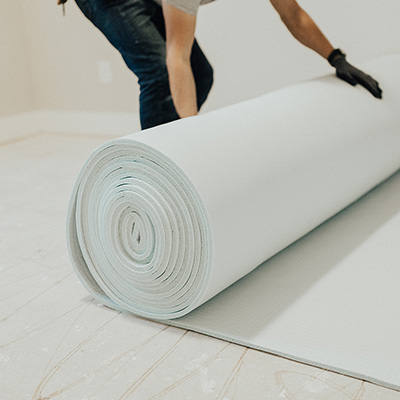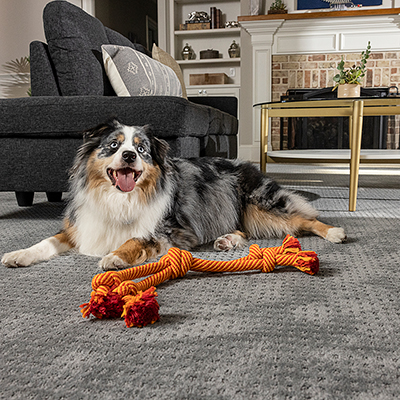Types of Carpet

Published May 19, 2025
Finding the right type of carpet is an important aspect of finishing your home. Carpet makes a room cozy and comfortable. Even subtle carpeting can help create a room's personality. Different types of carpet will serve different needs. This guide covers the types of carpet. It includes all the factors you should consider when choosing carpet to fit your home.
Table of Contents
Consider the Room
Carpet Piles and Face Weight
Carpet Fiber Materials
Indoor Carpet Styles and Constructions
Carpet Padding
Consider the Room
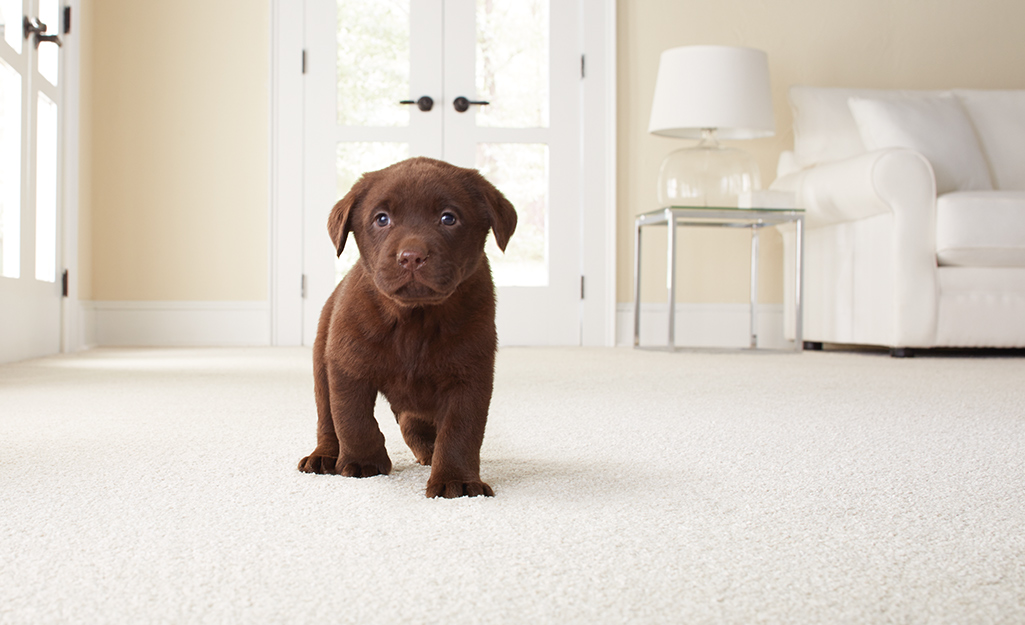
Before deciding between different types of carpet, consider the room you plan on carpeting. The room’s purpose should guide your decision-making process. Think about:
- How much traffic the room will get
- Who will be using the room
- How the room will be used
- How the room will contribute to the overall look of your home
For example, the best types of carpet for a family room may not be the best carpet for a home office or the best carpet for basements and so on.
A family room will typically get much more daily traffic than a home office. A more durable carpet would be a good choice for the family room.
A home office may be where you choose to use a statement carpet color or pattern. A neutral carpet might be the better choice for a family room. Family room decor can change more often, especially for holiday seasons.
The size of the room is another important factor. Not all carpet styles will be economical choices for large rooms.
Tip: The best carpet for stairs will be a carpet that resists snagging, abrasions and dirt. Since stairs are more difficult to clean, the best carpet for stairs should also deter pet hair, so consider low pile carpet options.
Carpet Piles and Face Weight
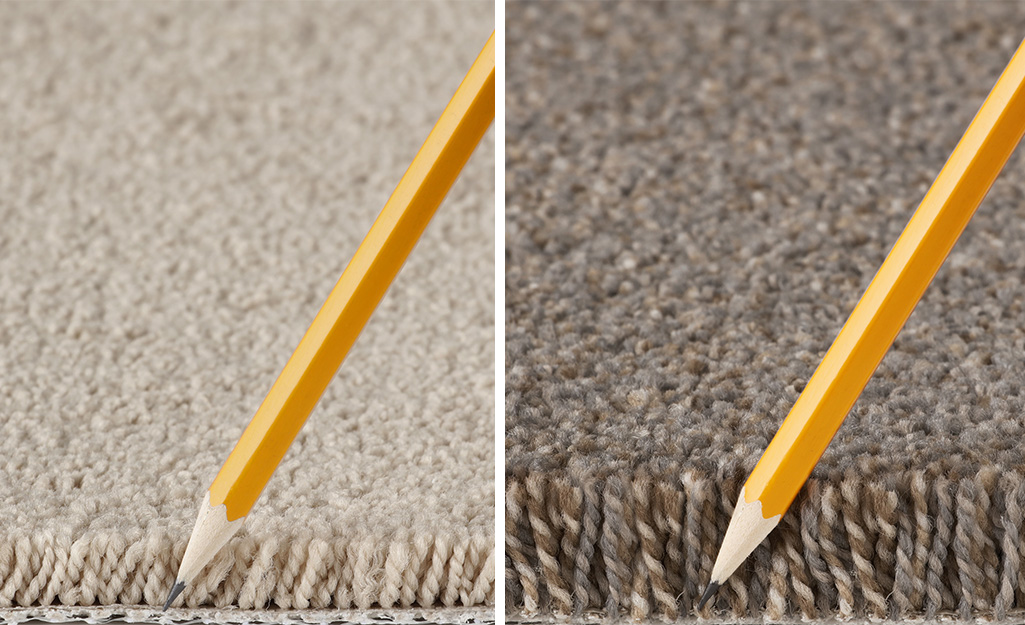
When determining the quality and durability of carpet, start by finding out its pile height and face weight.
Pile height is the height of the carpet fibers, excluding the backing. Carpet will typically be classified as low pile carpet, medium pile carpet or high pile carpet.
Low pile carpet has short fibers that look and feel flat and dense. This type of carpet is easy to clean and durable. It doesn’t catch much dirt or debris. Plus, it can stand up to a lot of foot traffic without losing its initial appearance. Low pile carpet is the best carpet for high traffic areas and rooms where dirt, pet hair or other messes are a concern.
Medium pile carpet offers a balance of ease and comfort. With fibers taller than those of low pile carpet, medium pile carpet is softer to the touch. Still, it manages to hold up to moderate foot traffic and dirt. Medium pile carpet is a popular choice for living rooms and bedrooms where you may want more comfort underfoot. Although more prone to catching pet hair and debris, this type of carpet can still be easily cleaned with a vacuum fitted with a brush roller.
High pile carpet has long fibers that create a plush and fluffy look and feel. High pile carpet adds extra cushion underfoot. However, it also collects dust and debris more readily, so it requires more frequent maintenance. Additionally, high pile carpets are more prone to being crushed and holding impressions from furniture and foot traffic. This pile height is a good choice for areas where you want to add a touch of warmth and luxury or where you want to dampen noise.
You can think of carpet face weight in the same terms as thread count for bedding, the higher, the better. Comparing face weights, however, will only be helpful when you are looking at the same type of carpet. Because of differences in the way carpets are made, the face weights of each type vary. For example, you'd want to look at the numbers for two types of Berber, but not Berber vs. textured carpet.
Carpet Fiber Materials
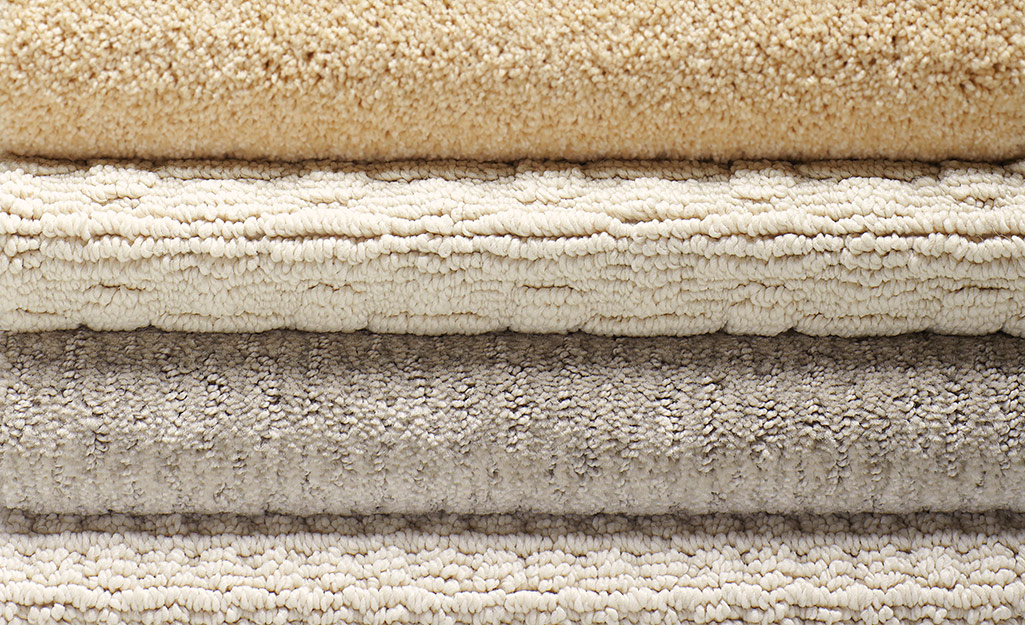
Most carpet fibers are made of synthetic materials or blends of synthetic and natural materials. Synthetic materials are designed to resist stains, static electricity, fading and moisture. Of course, each type of carpet fiber has various pros and cons, even among synthetic options. There are five primary types of carpet fibers:
Nylon is the most popular carpet fiber, thanks to its strength and durability. It resists fading, mildew, staining and crushing. Nylon carpet tends to be the most popular for homes with pets thanks to its durability, stain resistance and affordability.
Triexta has a similar appearance to nylon fibers but is significantly softer. It is naturally hydrophobic, so it repels stains and moisture damage well.
Polyester fibers, like triexta fibers, are hydrophobic and resist stains. Polyester also offers vibrant color options. However, polyester fibers can fade in the sun. They are typically less durable than nylon fibers.
Wool, a traditional and natural fiber, has a soft and luxurious feel. Wool is a strong material that can hold up to heavy foot-traffic and compaction from furniture. However, it needs to be cleaned and maintained properly. Many stains, as well as the chemicals in stain removers, can damage wool carpet.
Olefin is another durable and colorfast fiber option that is suitable for high traffic areas. Olefin carpet tends to be less expensive than the other four main types of carpet fibers.
Tip: Nylon carpet tends to be the most popular for homes with pets, thanks to its durability, stain resistance and affordability.
Indoor Carpet Styles and Constructions
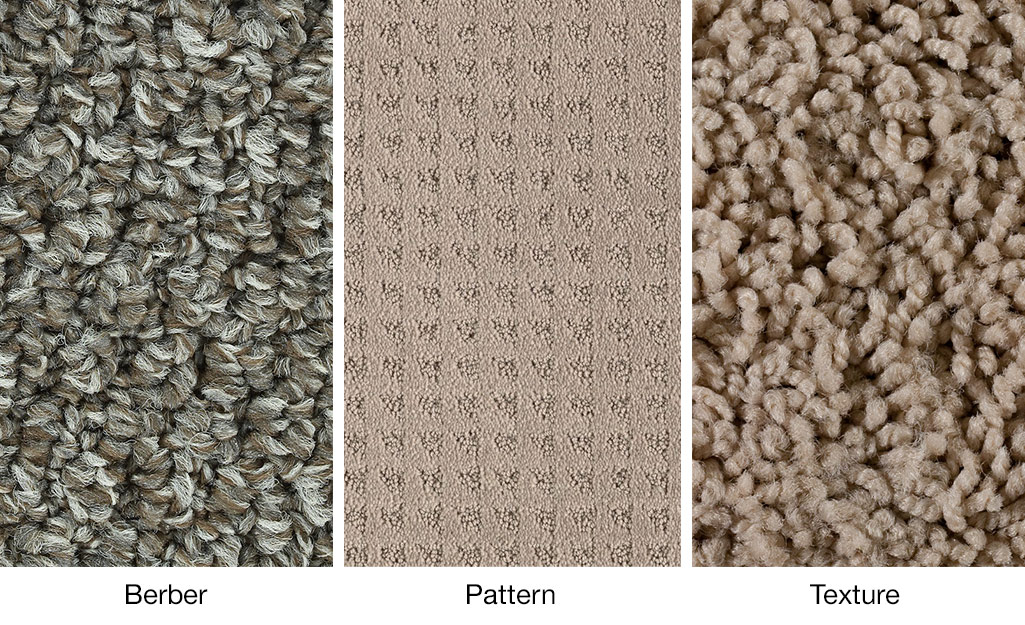
There are three main types of indoor carpet. Choose the one that fits your needs and matches your style.
Texture carpet, also known as twist carpet, is the most popular indoor carpet style. It uses two-toned yarn. Its tightly twisted construction resists absorbing dirt. Soft to the touch and subdued in appearance, texture carpet is a popular choice for family rooms and bedrooms.
Berber carpet or loop carpet is a dense construction that holds up well in heavily trafficked areas. The yarn is uncut and looped, which makes it highly stain resistant. Berber carpet is one of the best carpets for stairs, hallways and basements. Pet owners should be aware that their pet's claws can snag on this type of carpet.
Pattern carpet is a combination of texture and berber constructions. Since the looped yarn is slightly shorter than the cut yarn, this type of carpet appears to have its pattern cut into the surface. Many people prefer to use pattern carpet in family rooms, bedrooms and offices due to its sophisticated appearance.
Tip: Even outdoor carpet can be used indoors in the right situations. For example, artificial turf can be a good option for pet-exclusive areas.
Carpet Padding
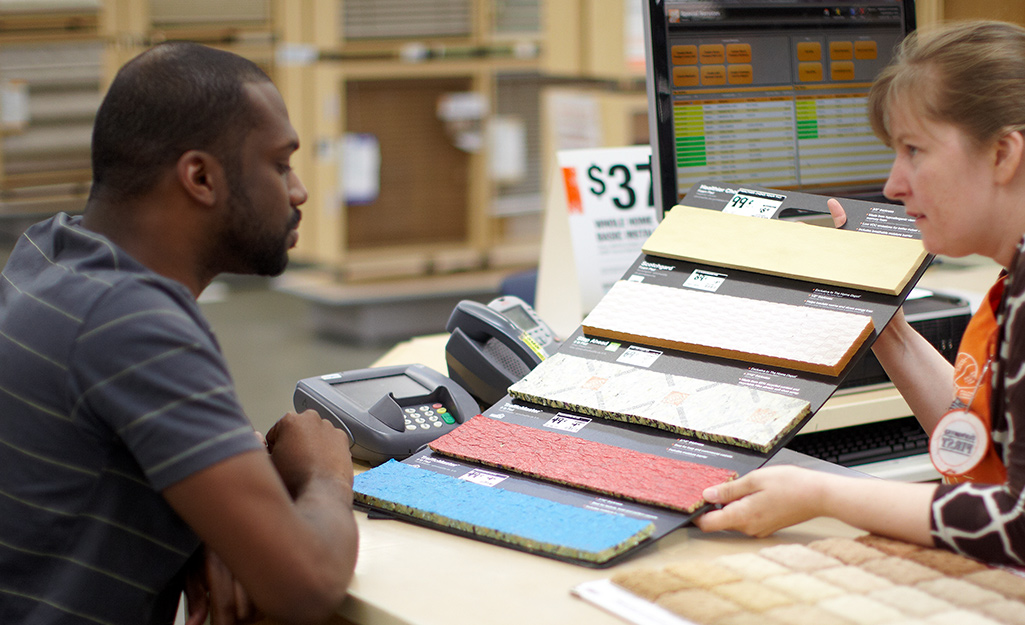
Once you have determined the type and construction of your carpet, you can choose the underlying carpet pad.
Carpet padding is the cushioning layer underneath the carpet.
Carpet padding:
- Makes walking on the carpet more comfortable
- Insulates the room
- Dampens noise
- Extends the life of the carpet
Many carpet pads also have a spill-safe moisture barrier. Thicker carpet pads are more comfortable and durable. However, you may want thinner carpet padding in commercial settings or for those who need steadier footing.
Thick carpet padding may not be ideal for all styles of carpet. For example, thick carpet pads have too much give for thin carpet styles like berber. They can damage the carpet in the long term. Always check the carpet manufacturer’s recommendations for the thickness of carpet padding.
Tip: If you are installing carpet tiles, there is no need for a carpet pad. The padding is already incorporated into the carpet tile.
When you’re shopping for carpet, you can choose from many options. This wide selection allows you to find exactly what you need for your home. The Home Depot can help you narrow down your choices. Visit a store near you to see carpet samples. You can also schedule a professional room measurement or request the warranty-backed carpet installation services.
Trying to figure out how much carpet you need? Use our online carpet calculator.
Ready to get carpet and all the tools you need for installation? Use The Home Depot Mobile App to locate products and check inventory. We'll take you to the exact aisle and bay.








